#post modern architecture luxembourg
Text
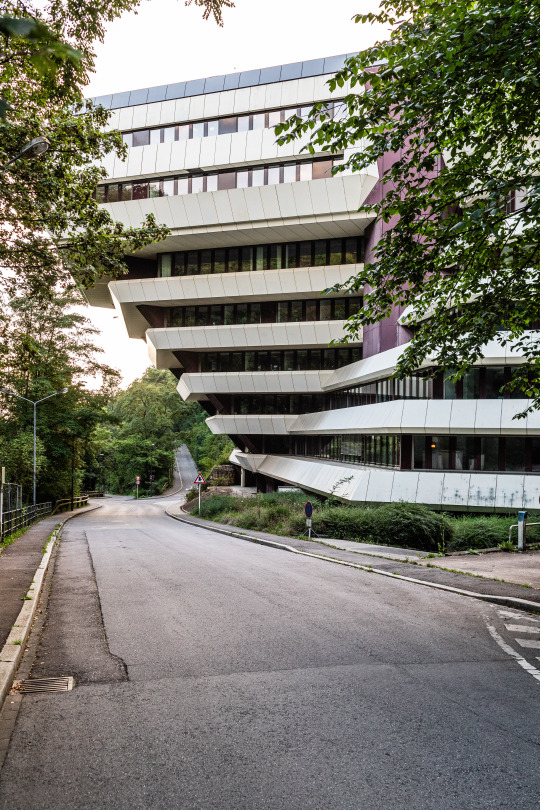
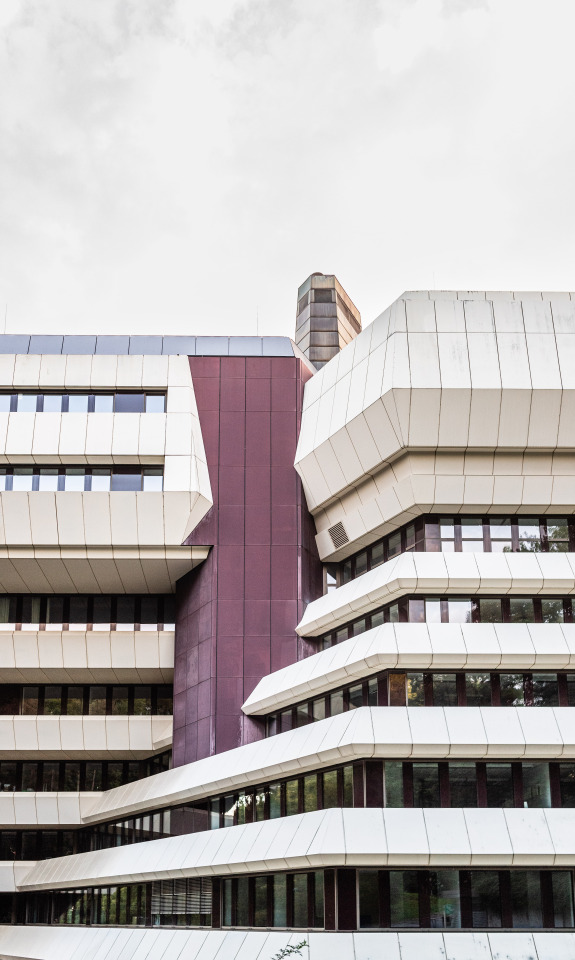
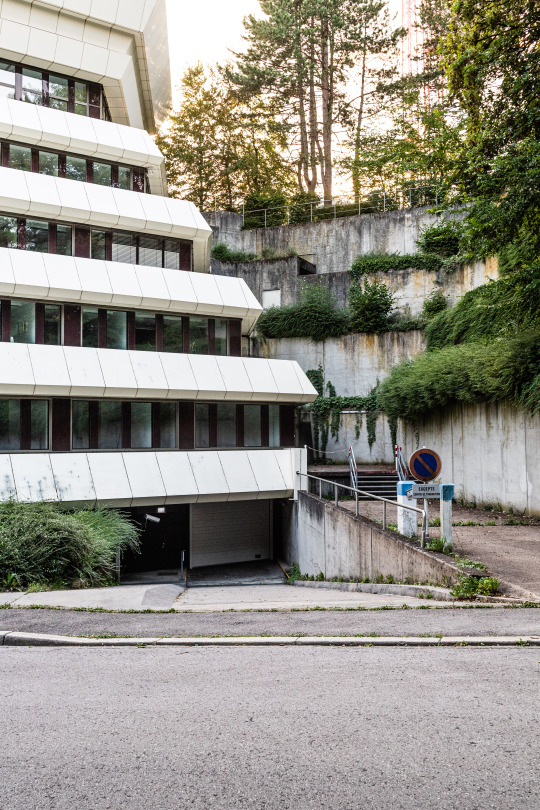

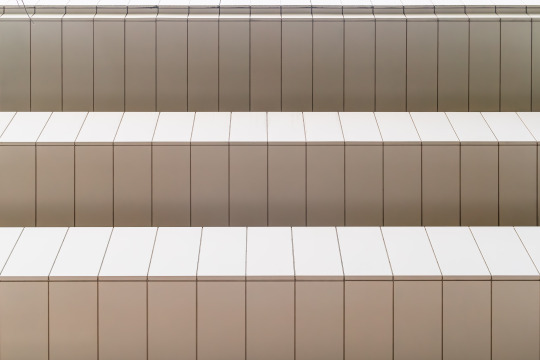
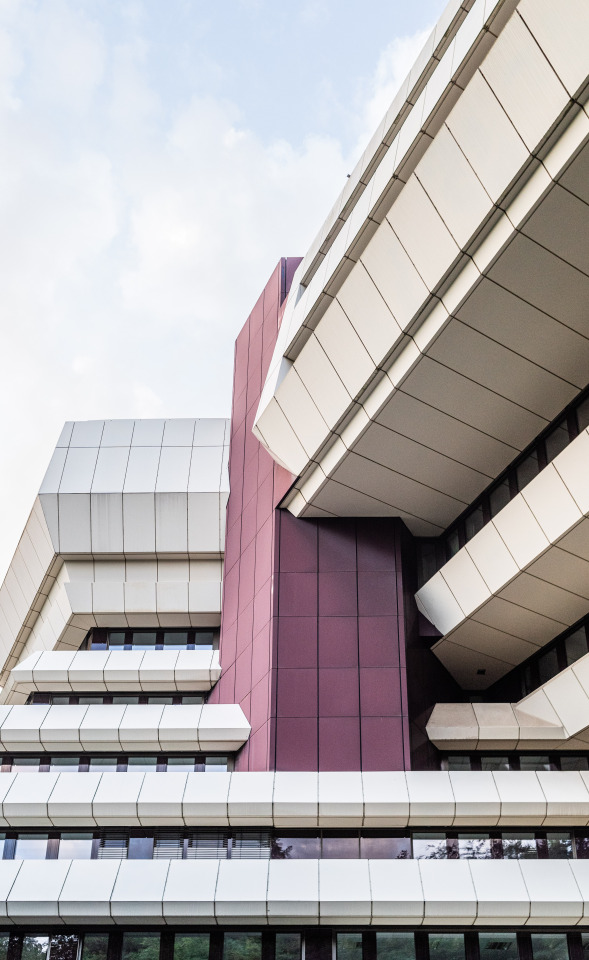
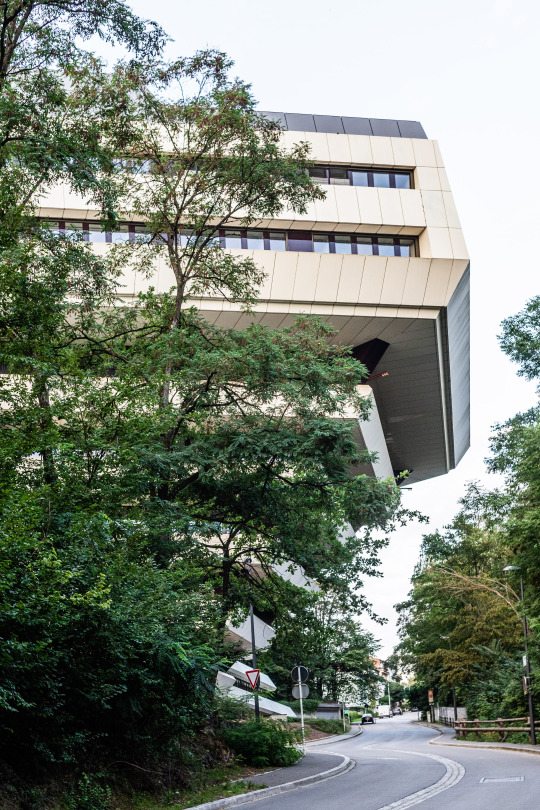
hemicycle // luxembourg kirchberg
architect: pierre bohler
completion: 1979
the hemicycle on the kirchberg plateau is an incredibly futuristic building that is somewhat hidden in the middle of the kirchberg forest. it looks like a film set for a dystopian film, so overgrown and lonely it stands on the road. fun fact: the european parliament, for which the building was originally built, only met four times in this building.
das hemicycle auf dem kirchbergplateau ist ein unglaublich schönes futuristisches Gebäude welches sich aber etwas versteckt mitten im wald des kirchberges befindet. es wirkt wie eine Kulisse für einen dystropischen film, so eingewachsen und einsam es an der straße steht. fun-fact ist das, das europäische parlament, für welches das gebäude ursprünglich gebaut wurde, nur viermal in diesem tagte.
#hemicyle#photography#architecture#architecture photography#design#postmoderne#postmodern architecture#urban#luxenbourg#luxembourg kirchberg#pierre bohler#post modern architecture luxembourg#european parliament#luxembourg
271 notes
·
View notes
Note
hey why is so much of your writing set in the american interior, like are there thematic/symbolic reasons, or. i'm a big fan of the midwest myself but have never really been able to articulate why. something to do with reading too much dfw and gass in high school, something to do with vast desolate cornfields stretching into infinity, an emptiness comprising two dimensions of space and one of time. anyways big fan of your fiction, keep up the good work
Early in my writing career I got this idea: Wouldn't it be cool if I wrote a story set in every different state in the United States? (Only I thought this was cool.) In my pre-Bavitz writing, I had stories set in California, Washington state, Oklahoma, Massachusetts, and Alaska. I also had a couple of international stories, one set in Canada's Northwest Territories and one set in Luxembourg and Belgium. (And Rot, which I mentioned in a previous ask, was set in a fantasy version of England.) Of these stories, only the Oklahoma one could be considered set in the American interior, so it was in no ways a trend.
My idea for Fargo was to write a magical girl story somewhere bleak and desolate, and at the time I was for unrelated reasons learning about the shale oil boom and subsequent homelessness crisis in Williston, North Dakota, so that became the anchor for the setting of the story as a whole. (The name Fargo, which I was well aware was the name of a famous movie, was a throwaway gimmick joke similar to my posting Rot under the persona of a Chinese professional League of Legends player.) As a sequel based on certain elements established in Fargo, and in order to keep the "Title taken from a famous movie that is also the name of an American city" gimmick, Chicago's setting was likewise defined by its relation to Williston in one way or another.
The rest of my stories had their settings chosen pretty deliberately. Modern Cannibals is a road trip story, so it would have to span at least a few states, and with Las Vegas as a necessary endpoint I had only a few choices for the starting point. I settled on Denver to give me a trip that would take the characters both through mountain ranges and completely barren desert wastelands, and ran with Denver's illustrious history of mass shootings for thematic spice. CxC needed to operate in two settings, settings I wanted to be extremely different from one another. I came up with Los Alamos for the Harper chapters pretty quickly due to its status as both relatively isolated and a tech/aeronautics hotspot; placing Harper in a sprawling urban environment like Silicon Valley would've been counterproductive on a thematic level. I knew Gramme, on the other hand, would need to be somewhere in the Rust Belt, a decrepit and decaying locale. I originally planned for Pittsburgh before seeing a video showcasing some of the decayed architecture from Detroit's heyday. This video gave me the idea to place Gramme inside a gigantic, decrepit mansion (originally he'd lived in a relatively normal house) and also allowed me to confront Gramme with the artistic ruin of the city in the final chapters.
I'm a fan of geography, especially American geography, which so often oscillates between the grandiose and the bleak. But for all of my stories, I put a lot of thought into the setting, trying to think of specific elements of the locations where they take place that tie into the thematic or tonal concepts of the work.
6 notes
·
View notes
Text

Title: Paris Unveiled: A Tourist's Guide to the City of Lights
Introduction:
Bienvenue à Paris! The enchanting City of Lights beckons with its timeless allure, boasting a plethora of iconic landmarks, world-class museums, and romantic corners. In this guide, we'll explore the must-visit tourist attractions in Paris that will undoubtedly make your journey unforgettable.
Eiffel Tower:
No visit to Paris is complete without marveling at the iconic Eiffel Tower. Soaring above the city skyline, this wrought-iron masterpiece offers breathtaking panoramic views of Paris from its observation decks. Consider a visit during sunset for an extra touch of magic.
Louvre Museum:
Home to the world's most celebrated art collections, the Louvre is a cultural treasure trove. Admire the enigmatic Mona Lisa, gaze upon the majestic Winged Victory of Samothrace, and wander through the regal halls of this historic palace turned museum. Book luggage storage paris gare du nord
Notre-Dame Cathedral:
Despite the tragic fire in 2019, Notre-Dame remains a symbol of Parisian Gothic architecture. Marvel at its stunning facade, intricate gargoyles, and awe-inspiring interior. The ongoing restoration efforts allow visitors to witness the resilience and beauty of this iconic landmark.
Musée d'Orsay:
Housed in a former railway station, the Musée d'Orsay is a haven for art lovers, showcasing an unparalleled collection of Impressionist and Post-Impressionist masterpieces. Van Gogh, Monet, and Degas await within its elegant galleries.
Montmartre and Sacré-Cœur Basilica:
Immerse yourself in the artistic charm of Montmartre, where bohemian spirit thrives. Climb the steps to the Sacré-Cœur Basilica for a panoramic view of the city, and wander through narrow streets filled with artists, bistros, and the enchanting Place du Tertre.
Versailles Palace and Gardens:
Just a short trip from Paris, the Palace of Versailles is a testament to opulence and grandeur. Explore the Hall of Mirrors, stroll through meticulously landscaped gardens, and marvel at the royal splendor that defined an era.
Centre Pompidou:
A striking contrast to Paris's classical architecture, the Centre Pompidou is a modern and contemporary art hub. Its bold design houses a diverse collection of avant-garde masterpieces and offers a panoramic terrace with stunning city views.
Seine River Cruise:
Witness Paris from a different perspective by taking a Seine River cruise. Glide past illuminated landmarks, including the Eiffel Tower, Notre-Dame, and Musée d'Orsay, as the city sparkles under the night sky.
Champs-Élysées and Arc de Triomphe:
Stroll down the famous Champs-Élysées, lined with theaters, cafes, and luxury boutiques, and reach the grand Arc de Triomphe. Ascend to the top for a commanding view of the city's grand boulevards radiating in all directions.
Luxembourg Gardens:
Find serenity in the heart of Paris at Luxembourg Gardens. Adorned with statues, fountains, and perfectly manicured lawns, this oasis is ideal for a leisurely afternoon stroll or a peaceful boat ride on the pond.
Conclusion:
Paris, with its timeless charm and cultural richness, offers an unparalleled tapestry of experiences for every traveler. From the iconic landmarks that define its skyline to the intimate corners where history and romance intertwine, the City of Lights awaits exploration and discovery. Bon voyage!
0 notes
Text
youtube
2 weeks in Paris 5 Amazing Places to Travel Ideas Perfect for 2 Weeks in Paris 2024 When exploring the city, the rich history and role of the city in those historical events became clear everywhere we went. I wanted to do justice to that idea and the French spirit the way I had perceived it. Paris is renowned for its iconic landmarks like the Eiffel Tower, and the Louvre Museum, and charming neighborhoods like Montmartre. It offers a rich blend of art, history, and cuisine, making it a top destination for culture enthusiasts and food lovers alike. The city's romantic ambiance and architectural beauty further contribute to its allure, making it a must-visit destination for many travelers.
Please subscribe to my channel: UCoPFoey1_l5MT7F6a_xCKOQ
Paris, the city of timeless architecture, invites the wandering architect to explore its historic landmarks like the Eiffel Tower and the Louvre Museum. From the intricate details of Notre Dame to the modern elegance of La Défense, every corner tells a design story. Immerse yourself in a journey through the ages, where the art of construction meets the romance of the Seine.
These diverse experiences will fill your two weeks in Paris with culture, romance, and unforgettable memories.
1.*Eiffel Tower:* Begin your Parisian adventure with the iconic Eiffel Tower. Explore its grounds, take an elevator ride to the top for breathtaking views, and enjoy a picnic in the adjacent Champ de Mars.
2. Louvre Museum: Immerse yourself in art and history at the Louvre. Marvel at masterpieces like the Mona Lisa and Venus de Milo, and stroll through the vast halls of this world-renowned museum.
3. Montmartre: Experience the bohemian charm of Montmartre. Climb to the top for panoramic city views, visit the artistic Place du Tertre, and explore the Sacré-Cœur Basilica.
4. Seine River Cruise: Relax on a romantic Seine River cruise. Admire Paris from the water as you pass by landmarks like Notre-Dame Cathedral, Musée d'Orsay, and the Louvre, illuminated at night.
5. Versailles Palace: Take a day trip to the opulent Palace of Versailles. Wander through the stunning gardens, explore the Hall of Mirrors, and delve into the rich history of this royal residence.
6. Sainte-Chapelle and Île de la Cité: Discover the breathtaking stained glass of Sainte-Chapelle on Île de la Cité. Explore the historic heart of Paris, including Notre-Dame Cathedral (currently under restoration).
7. Latin Quarter: Immerse yourself in the vibrant Latin Quarter. Wander through narrow streets, visit the Sorbonne University, and explore the famous Shakespeare and Company bookstore.
8. Musée d'Orsay: Appreciate the world's greatest collection of Impressionist and Post-Impressionist masterpieces at the Musée d'Orsay. The former railway station itself is a work of art.
9. Luxembourg Gardens: Relax in the picturesque Luxembourg Gardens. Enjoy the beauty of the Medici Fountain, stroll through the manicured lawns, and savor the tranquility in this oasis within the city.
10. Cruise to Île de la Cité: Take a boat cruise to explore the islands of Paris. Admire the historic architecture and unique perspective of landmarks like Notre Dame Cathedral and the Conciergerie from the water.
11. Moulin Rouge: Experience the famous cabaret show at Moulin Rouge. Enjoy an evening of dazzling performances, colorful costumes, and the lively atmosphere of the Pigalle district.
12. Père Lachaise Cemetery: Visit the hauntingly beautiful Père Lachaise Cemetery. Pay respects to famous figures like Jim Morrison and Oscar Wilde while exploring this serene and historic burial ground.
13. Shopping on Champs-Élysées: Indulge in some upscale shopping along the Champs-Élysées. Explore designer boutiques, and flagship stores, and enjoy a leisurely stroll along this iconic avenue.
14. Le Marais: Dive into the trendy and historic Le Marais district. Discover its charming streets, visit art galleries, and try local delicacies in cafes and bakeries.
15. Day Trip to Giverny: Venture to Giverny, the home of Claude Monet. Explore the artist's house and gardens that inspired his famous Water Lilies paintings.
#mdmahfuz14318#paris cinematic video#paris cinematic video4k#2 weeks travel#nature video 4k#travel channel mahfuz#travel agency mahfuz#paris best places to visit#france tourist places malayalam#2 days paris trip#the romantic city of paris is the best place to visit#paris france olympics 2024#4k video of paris#paris top 5 best places#paris#time for paris the travelling architect#paris travel tips#Paris city tour#Youtube
0 notes
Text
Day 3 except it’s posted on Day 4 and covers Day 1 and Day 2 as well
The jet lag was like hell, I couldn’t sleep the whole night, and the breakfast was awful on arrival.
I’m glad I went through all of it.
Because all of it brought me here, a place that going to seemed like a pipe dream. It seemed much different than I expected, I honestly expected it to be a lot more modernized. It’s like a smaller, antique version of New York where things are in walking distance and history is worn on the sleeve. Also similar to New York, it bears a lot of graffiti. More than I imagined in fact.
So far, I feel something different here than I do back home. I think I feel a greater sense of calm than I normally do. Along with a bit more confidence and willingness to go places. On the third day I felt a certain sense of magic, sipping vending machine cappuccino early in the morning and walking to get breakfast. It could just be that I’m in a new place. It could also be the fact that cars aren’t really necessary, everything can be walked to or taken the metro to, and everything’s more quiet. My hometown is a place where I can’t just walk from home to a restaurant, cars are mandatory to living there. Lexington is a bit better, but even then there’s a lot that can’t really be walked to and it's loud a lot of the time. But this? This is the kind of change I’ve been looking for. And even if it can’t last forever and I may never get it back (unless I pull a Hemingway…) I can still hold onto it just for this moment. As long as it’s mine.
The first day felt like compensation. To compensate for a bland breakfast, I was provided a terrific lunch. To compensate for a sleepless plane, I was provided a boat to nap on. (Seriously, I was so freaking tired)

Second day kind of shows off something Nancy said. “A place where the past meets the present.” After taking a ride through the modern RER and Metro, we arrive at the historic Arc de Triomphe. Even before that, it can kind of be seen in the city itself with a lot of the architecture. Unlike New York, Paris never seems to bend too much to modernity and excessiveness. Instead feeling more timeless and with just what is needed.

Third day is where the history really amps up, especially with the Crypte Archaelogique where the Roman roots of Paris, Lutetia, are shown off. In fact, the second and third day show off something I wasn’t expecting from Paris: prevalent Greco-Roman imagery. From ferocious lion sculptures, to cute little putto, to Napoleon cosplaying his waifu Julius Caesar, what Paris was still shows even if it’s not the original. I feel like most of it came up during the Renaissance, yet it’s still a very close callback to Lutetia.


We even see a shift in purpose such as with the amphitheater, which was originally a place for Romans to watch in amusement as lions disemboweled and devoured Christians in a horrifically agonizing death that meant the loss of beloved family to some and malicious entertainment to the uncaring others.
It is now a place for kids to play football.
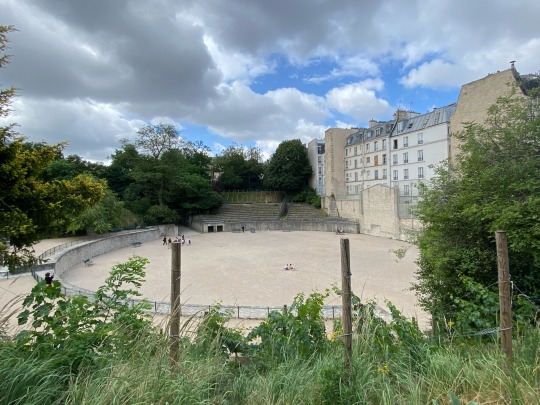
The third day is also my favorite so far because it took us to Luxembourg (AKA, my new favorite place.) There’s a point being driven home in class about how Paris doesn’t really engage in rush and hustle culture and takes time to live. That’s best on display in the expansive and lucious park.

I went back and - in an unexpected occurrence - had a conversation with a Parisian artist on exhibit. Rui Prazeres’ exhibit Paradis Artificiel des Reves Cellulaire metamorphoses draws from biology and is on display until July 10. I managed to meet him in the exhibit and have a conversation about his work and art in general. I thanked him for his patience with me since I didn’t understand French, and he thanked me for my patience since he didn’t understand some of the concepts I was trying to talk about.
Also, sorry if this doesn’t look right. Tumblr decided it hates me.
0 notes
Text
Cheers to Luxembourg City's Best Bars: A Guide to the Trendiest Drinking Spots

Luxembourg City, the capital of the Grand Duchy of Luxembourg, is a beautiful and cosmopolitan city with a rich history, stunning architecture, and a lively nightlife scene. If you're looking for a fun night out in the city, there are plenty of bars to choose from, each with its own unique atmosphere and drinks selection. In this blog post, we'll take a look at some of the best bars in Luxembourg City.
Go Ten bar is a popular bar located in the heart of Luxembourg, where you can find the largest selection of Gin & Tonic in the region, unique heated benches outdoor, and probably the finest electronic music in the country. It's a great place to grab a drink with friends and enjoy some live music. The bar has a warm and welcoming atmosphere and serves a wide selection of beers, wines, and spirits. If you're feeling peckish, you can also order some delicious bar snacks, including burgers, nachos, and fries.
Another great bar in Luxembourg City is cocktail bars. Located in the luxembourg city, this bar is known for its modern decor, delicious cocktails, and friendly staff. It's the perfect place to sip a drink and soak up the vibrant atmosphere of the city. Whether you're in the mood for a classic cocktail or something a little more adventurous, the bartenders at cocktail bar will have you covered.
For More informations please visit our website: https://gotenbar.com/ or visit our Google Business Profile here at : https://goo.gl/maps/p9A7NC4ku9FNnNWf6
0 notes
Photo
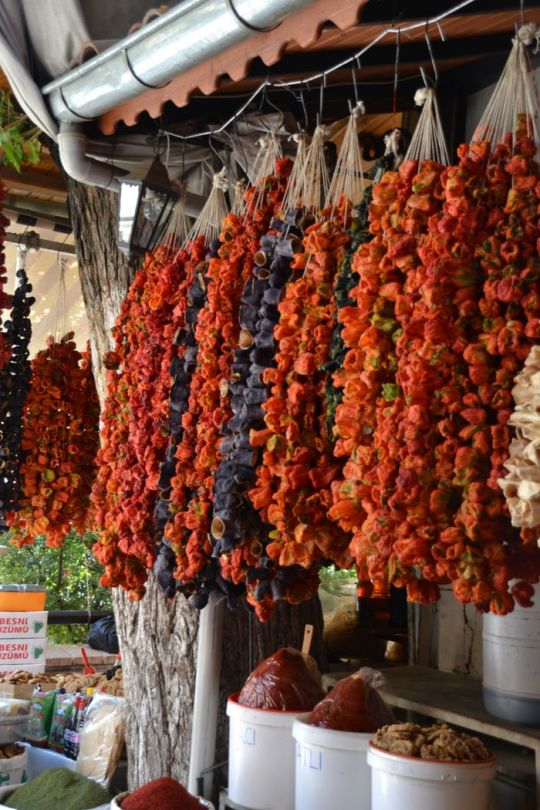
This Roman city
This Roman city, mainly on the island, but with annexes, north and south, on the mainland, according to the legend of St. Genevieve, repels the assault of Attila, is captured by Clovis at the end of the fifth century, and is made his capital. During the early monarchy, the island was the city, the home of the kings, the seat of the church, of government, and of justice, crowded with narrow streets and churches, and densely populated.
Gradually as the walls of Paris were extended in a series of circuits from the twelfth to the eighteenth century, the island city was eased of its close population, and at last in our own day was cleared altogether by gigantic sweeps of destruction and reconstruction. It once contained some 50,000 inhabitants, at least fifty or sixty streets, and more than twenty churches. To-day it has few private houses left, except at each end. As we said, the Citi consists of Cathedral, Palais de Justice, and Sainte Chapelle, Conciergerie and Prisons, Prefecture of Police, Chamber of Commerce, a huge hospital, a huge barrack, a flower market — vast places,’ gardens, quays, and Morgue. This is almost all that stands on the Paris of Julian, Clovis, and Hugh Capet.
Roman and Gallo-Roman circuit
It is a task full of historical teaching to trace the successive circuits and the walls of the city as it gradually grew. Each circuit represents an epoch in the history of France. First comes the old Roman and Gallo-Roman circuit — the Citi or island with some fortified post at the head of the North Bridge (PI. du Chatelet) and at the South Bridge (R. St. Jacques) extending on the South mainland as far as the Thermes with villas, theatres, cemeteries, and establishments outside the city circuit. The second circuit is that of Louis the Stout, the great restorer of the monarchy (1130), who built the Grand Chdtelet on the site of the Place du Chatelet, and the Petit Chatelet on the Quai St. Michel (left bank).
The third circuit is that of the great king Philip Augustus (1200), who built the Louvre, completed Notre Dame, and carried the walls North as far as St. Eustache, South as far as the Pantheon private tour istanbul, and included the smaller island, so that the original Citi was now but a sixth of the city. Next comes the fourth circuit, raised by Etienne Marcel in the middle of the fourteenth century, just after Poitiers during the great English War, who is duly commemorated by the fine equestrian statue beside the Hotel du Ville. Marcel laid the foundations of the Bastille, and repaired and strengthened rather than extended the circuit of Philip Augustus; and then the whole work was completed by Charles v. in the second half of the fourteenth century.
The fifth great circuit is that of Richelieu under Louis XIII. who carried the city walls Northwards as far as the existing inner Boulevards, and the R. Richelieu and its quarter is one of its additions; and Southwards it inclosed the whole district of the Luxembourg and its gardens to the Jardin des Plantes. The sixth great change came in the reign of Louis xiv. who conceiving himself invincible in France, if not in Europe, found fortifications in Paris needless and barbarous. Accordingly in his reign the old walls of Henry iv. and Richelieu were razed, and the Boulevards that we know were constructed as spacious avenues. On the site of the ancient Tour de Nesle, the Institute and the College Mazarin were built; the Louvre was completed and transformed into an Italian palace; the Tuileries were continued until they joined the Louvre; the Invalides and other great works were continued, and finally Paris received its character of an open modern city of Palladian architecture.
0 notes
Photo
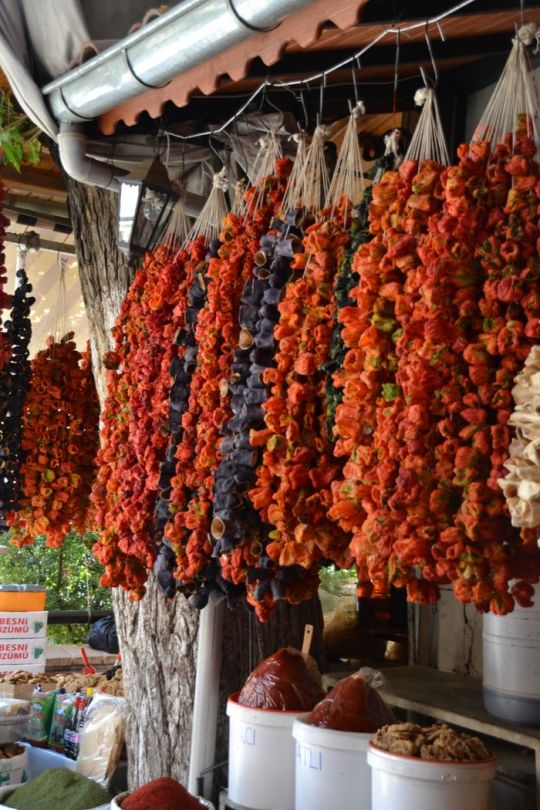
This Roman city
This Roman city, mainly on the island, but with annexes, north and south, on the mainland, according to the legend of St. Genevieve, repels the assault of Attila, is captured by Clovis at the end of the fifth century, and is made his capital. During the early monarchy, the island was the city, the home of the kings, the seat of the church, of government, and of justice, crowded with narrow streets and churches, and densely populated.
Gradually as the walls of Paris were extended in a series of circuits from the twelfth to the eighteenth century, the island city was eased of its close population, and at last in our own day was cleared altogether by gigantic sweeps of destruction and reconstruction. It once contained some 50,000 inhabitants, at least fifty or sixty streets, and more than twenty churches. To-day it has few private houses left, except at each end. As we said, the Citi consists of Cathedral, Palais de Justice, and Sainte Chapelle, Conciergerie and Prisons, Prefecture of Police, Chamber of Commerce, a huge hospital, a huge barrack, a flower market — vast places,’ gardens, quays, and Morgue. This is almost all that stands on the Paris of Julian, Clovis, and Hugh Capet.
Roman and Gallo-Roman circuit
It is a task full of historical teaching to trace the successive circuits and the walls of the city as it gradually grew. Each circuit represents an epoch in the history of France. First comes the old Roman and Gallo-Roman circuit — the Citi or island with some fortified post at the head of the North Bridge (PI. du Chatelet) and at the South Bridge (R. St. Jacques) extending on the South mainland as far as the Thermes with villas, theatres, cemeteries, and establishments outside the city circuit. The second circuit is that of Louis the Stout, the great restorer of the monarchy (1130), who built the Grand Chdtelet on the site of the Place du Chatelet, and the Petit Chatelet on the Quai St. Michel (left bank).
The third circuit is that of the great king Philip Augustus (1200), who built the Louvre, completed Notre Dame, and carried the walls North as far as St. Eustache, South as far as the Pantheon private tour istanbul, and included the smaller island, so that the original Citi was now but a sixth of the city. Next comes the fourth circuit, raised by Etienne Marcel in the middle of the fourteenth century, just after Poitiers during the great English War, who is duly commemorated by the fine equestrian statue beside the Hotel du Ville. Marcel laid the foundations of the Bastille, and repaired and strengthened rather than extended the circuit of Philip Augustus; and then the whole work was completed by Charles v. in the second half of the fourteenth century.
The fifth great circuit is that of Richelieu under Louis XIII. who carried the city walls Northwards as far as the existing inner Boulevards, and the R. Richelieu and its quarter is one of its additions; and Southwards it inclosed the whole district of the Luxembourg and its gardens to the Jardin des Plantes. The sixth great change came in the reign of Louis xiv. who conceiving himself invincible in France, if not in Europe, found fortifications in Paris needless and barbarous. Accordingly in his reign the old walls of Henry iv. and Richelieu were razed, and the Boulevards that we know were constructed as spacious avenues. On the site of the ancient Tour de Nesle, the Institute and the College Mazarin were built; the Louvre was completed and transformed into an Italian palace; the Tuileries were continued until they joined the Louvre; the Invalides and other great works were continued, and finally Paris received its character of an open modern city of Palladian architecture.
0 notes
Photo

This Roman city
This Roman city, mainly on the island, but with annexes, north and south, on the mainland, according to the legend of St. Genevieve, repels the assault of Attila, is captured by Clovis at the end of the fifth century, and is made his capital. During the early monarchy, the island was the city, the home of the kings, the seat of the church, of government, and of justice, crowded with narrow streets and churches, and densely populated.
Gradually as the walls of Paris were extended in a series of circuits from the twelfth to the eighteenth century, the island city was eased of its close population, and at last in our own day was cleared altogether by gigantic sweeps of destruction and reconstruction. It once contained some 50,000 inhabitants, at least fifty or sixty streets, and more than twenty churches. To-day it has few private houses left, except at each end. As we said, the Citi consists of Cathedral, Palais de Justice, and Sainte Chapelle, Conciergerie and Prisons, Prefecture of Police, Chamber of Commerce, a huge hospital, a huge barrack, a flower market — vast places,’ gardens, quays, and Morgue. This is almost all that stands on the Paris of Julian, Clovis, and Hugh Capet.
Roman and Gallo-Roman circuit
It is a task full of historical teaching to trace the successive circuits and the walls of the city as it gradually grew. Each circuit represents an epoch in the history of France. First comes the old Roman and Gallo-Roman circuit — the Citi or island with some fortified post at the head of the North Bridge (PI. du Chatelet) and at the South Bridge (R. St. Jacques) extending on the South mainland as far as the Thermes with villas, theatres, cemeteries, and establishments outside the city circuit. The second circuit is that of Louis the Stout, the great restorer of the monarchy (1130), who built the Grand Chdtelet on the site of the Place du Chatelet, and the Petit Chatelet on the Quai St. Michel (left bank).
The third circuit is that of the great king Philip Augustus (1200), who built the Louvre, completed Notre Dame, and carried the walls North as far as St. Eustache, South as far as the Pantheon private tour istanbul, and included the smaller island, so that the original Citi was now but a sixth of the city. Next comes the fourth circuit, raised by Etienne Marcel in the middle of the fourteenth century, just after Poitiers during the great English War, who is duly commemorated by the fine equestrian statue beside the Hotel du Ville. Marcel laid the foundations of the Bastille, and repaired and strengthened rather than extended the circuit of Philip Augustus; and then the whole work was completed by Charles v. in the second half of the fourteenth century.
The fifth great circuit is that of Richelieu under Louis XIII. who carried the city walls Northwards as far as the existing inner Boulevards, and the R. Richelieu and its quarter is one of its additions; and Southwards it inclosed the whole district of the Luxembourg and its gardens to the Jardin des Plantes. The sixth great change came in the reign of Louis xiv. who conceiving himself invincible in France, if not in Europe, found fortifications in Paris needless and barbarous. Accordingly in his reign the old walls of Henry iv. and Richelieu were razed, and the Boulevards that we know were constructed as spacious avenues. On the site of the ancient Tour de Nesle, the Institute and the College Mazarin were built; the Louvre was completed and transformed into an Italian palace; the Tuileries were continued until they joined the Louvre; the Invalides and other great works were continued, and finally Paris received its character of an open modern city of Palladian architecture.
0 notes
Photo

This Roman city
This Roman city, mainly on the island, but with annexes, north and south, on the mainland, according to the legend of St. Genevieve, repels the assault of Attila, is captured by Clovis at the end of the fifth century, and is made his capital. During the early monarchy, the island was the city, the home of the kings, the seat of the church, of government, and of justice, crowded with narrow streets and churches, and densely populated.
Gradually as the walls of Paris were extended in a series of circuits from the twelfth to the eighteenth century, the island city was eased of its close population, and at last in our own day was cleared altogether by gigantic sweeps of destruction and reconstruction. It once contained some 50,000 inhabitants, at least fifty or sixty streets, and more than twenty churches. To-day it has few private houses left, except at each end. As we said, the Citi consists of Cathedral, Palais de Justice, and Sainte Chapelle, Conciergerie and Prisons, Prefecture of Police, Chamber of Commerce, a huge hospital, a huge barrack, a flower market — vast places,’ gardens, quays, and Morgue. This is almost all that stands on the Paris of Julian, Clovis, and Hugh Capet.
Roman and Gallo-Roman circuit
It is a task full of historical teaching to trace the successive circuits and the walls of the city as it gradually grew. Each circuit represents an epoch in the history of France. First comes the old Roman and Gallo-Roman circuit — the Citi or island with some fortified post at the head of the North Bridge (PI. du Chatelet) and at the South Bridge (R. St. Jacques) extending on the South mainland as far as the Thermes with villas, theatres, cemeteries, and establishments outside the city circuit. The second circuit is that of Louis the Stout, the great restorer of the monarchy (1130), who built the Grand Chdtelet on the site of the Place du Chatelet, and the Petit Chatelet on the Quai St. Michel (left bank).
The third circuit is that of the great king Philip Augustus (1200), who built the Louvre, completed Notre Dame, and carried the walls North as far as St. Eustache, South as far as the Pantheon private tour istanbul, and included the smaller island, so that the original Citi was now but a sixth of the city. Next comes the fourth circuit, raised by Etienne Marcel in the middle of the fourteenth century, just after Poitiers during the great English War, who is duly commemorated by the fine equestrian statue beside the Hotel du Ville. Marcel laid the foundations of the Bastille, and repaired and strengthened rather than extended the circuit of Philip Augustus; and then the whole work was completed by Charles v. in the second half of the fourteenth century.
The fifth great circuit is that of Richelieu under Louis XIII. who carried the city walls Northwards as far as the existing inner Boulevards, and the R. Richelieu and its quarter is one of its additions; and Southwards it inclosed the whole district of the Luxembourg and its gardens to the Jardin des Plantes. The sixth great change came in the reign of Louis xiv. who conceiving himself invincible in France, if not in Europe, found fortifications in Paris needless and barbarous. Accordingly in his reign the old walls of Henry iv. and Richelieu were razed, and the Boulevards that we know were constructed as spacious avenues. On the site of the ancient Tour de Nesle, the Institute and the College Mazarin were built; the Louvre was completed and transformed into an Italian palace; the Tuileries were continued until they joined the Louvre; the Invalides and other great works were continued, and finally Paris received its character of an open modern city of Palladian architecture.
0 notes
Photo

This Roman city
This Roman city, mainly on the island, but with annexes, north and south, on the mainland, according to the legend of St. Genevieve, repels the assault of Attila, is captured by Clovis at the end of the fifth century, and is made his capital. During the early monarchy, the island was the city, the home of the kings, the seat of the church, of government, and of justice, crowded with narrow streets and churches, and densely populated.
Gradually as the walls of Paris were extended in a series of circuits from the twelfth to the eighteenth century, the island city was eased of its close population, and at last in our own day was cleared altogether by gigantic sweeps of destruction and reconstruction. It once contained some 50,000 inhabitants, at least fifty or sixty streets, and more than twenty churches. To-day it has few private houses left, except at each end. As we said, the Citi consists of Cathedral, Palais de Justice, and Sainte Chapelle, Conciergerie and Prisons, Prefecture of Police, Chamber of Commerce, a huge hospital, a huge barrack, a flower market — vast places,’ gardens, quays, and Morgue. This is almost all that stands on the Paris of Julian, Clovis, and Hugh Capet.
Roman and Gallo-Roman circuit
It is a task full of historical teaching to trace the successive circuits and the walls of the city as it gradually grew. Each circuit represents an epoch in the history of France. First comes the old Roman and Gallo-Roman circuit — the Citi or island with some fortified post at the head of the North Bridge (PI. du Chatelet) and at the South Bridge (R. St. Jacques) extending on the South mainland as far as the Thermes with villas, theatres, cemeteries, and establishments outside the city circuit. The second circuit is that of Louis the Stout, the great restorer of the monarchy (1130), who built the Grand Chdtelet on the site of the Place du Chatelet, and the Petit Chatelet on the Quai St. Michel (left bank).
The third circuit is that of the great king Philip Augustus (1200), who built the Louvre, completed Notre Dame, and carried the walls North as far as St. Eustache, South as far as the Pantheon private tour istanbul, and included the smaller island, so that the original Citi was now but a sixth of the city. Next comes the fourth circuit, raised by Etienne Marcel in the middle of the fourteenth century, just after Poitiers during the great English War, who is duly commemorated by the fine equestrian statue beside the Hotel du Ville. Marcel laid the foundations of the Bastille, and repaired and strengthened rather than extended the circuit of Philip Augustus; and then the whole work was completed by Charles v. in the second half of the fourteenth century.
The fifth great circuit is that of Richelieu under Louis XIII. who carried the city walls Northwards as far as the existing inner Boulevards, and the R. Richelieu and its quarter is one of its additions; and Southwards it inclosed the whole district of the Luxembourg and its gardens to the Jardin des Plantes. The sixth great change came in the reign of Louis xiv. who conceiving himself invincible in France, if not in Europe, found fortifications in Paris needless and barbarous. Accordingly in his reign the old walls of Henry iv. and Richelieu were razed, and the Boulevards that we know were constructed as spacious avenues. On the site of the ancient Tour de Nesle, the Institute and the College Mazarin were built; the Louvre was completed and transformed into an Italian palace; the Tuileries were continued until they joined the Louvre; the Invalides and other great works were continued, and finally Paris received its character of an open modern city of Palladian architecture.
0 notes
Text

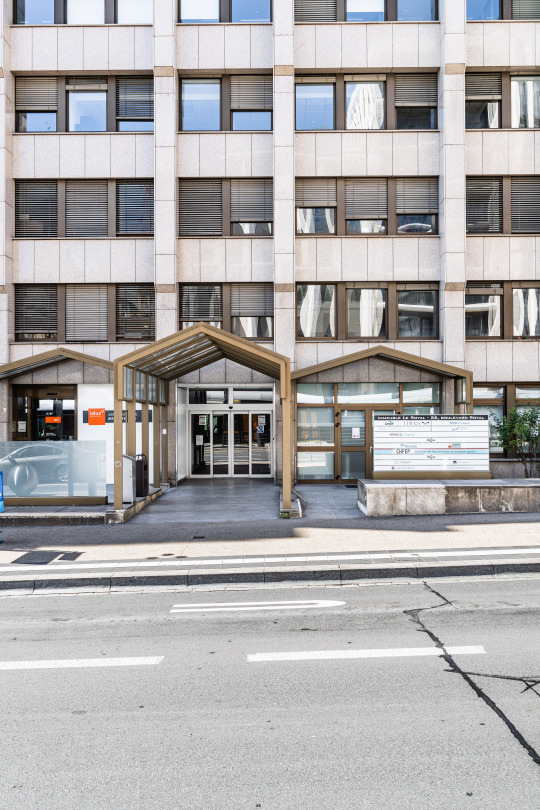
avenue de la liberté // luxembourg bahnhof
in luxembourg's bahnhof district, you can see a lot of modern and postmodern architecture. this ensures that you can always discover interesting facades.
im luxemburger stadtteil bahnhof begnet einem sehr viel moderne und postmoderne architektur. das sorgt dafür das man immer wieder interessante fassaden entdecken kann. diese mögen durchaus langweilig auf einen ersten blick erscheinen aber ein zweiter lohnt sich durchaus.
#postmoderne#architecture#photography#architecture photography#luxembourg#Luxembourg city#post war modern architecture#europe#design#modern facade design#street#urban#urban photography#europe post modern architecture#luxembourg post modern architecture#post moderne luxemburg#post moderne architektur luxemburg#luxembourg Bahnhof
86 notes
·
View notes
Photo

This Roman city
This Roman city, mainly on the island, but with annexes, north and south, on the mainland, according to the legend of St. Genevieve, repels the assault of Attila, is captured by Clovis at the end of the fifth century, and is made his capital. During the early monarchy, the island was the city, the home of the kings, the seat of the church, of government, and of justice, crowded with narrow streets and churches, and densely populated.
Gradually as the walls of Paris were extended in a series of circuits from the twelfth to the eighteenth century, the island city was eased of its close population, and at last in our own day was cleared altogether by gigantic sweeps of destruction and reconstruction. It once contained some 50,000 inhabitants, at least fifty or sixty streets, and more than twenty churches. To-day it has few private houses left, except at each end. As we said, the Citi consists of Cathedral, Palais de Justice, and Sainte Chapelle, Conciergerie and Prisons, Prefecture of Police, Chamber of Commerce, a huge hospital, a huge barrack, a flower market — vast places,’ gardens, quays, and Morgue. This is almost all that stands on the Paris of Julian, Clovis, and Hugh Capet.
Roman and Gallo-Roman circuit
It is a task full of historical teaching to trace the successive circuits and the walls of the city as it gradually grew. Each circuit represents an epoch in the history of France. First comes the old Roman and Gallo-Roman circuit — the Citi or island with some fortified post at the head of the North Bridge (PI. du Chatelet) and at the South Bridge (R. St. Jacques) extending on the South mainland as far as the Thermes with villas, theatres, cemeteries, and establishments outside the city circuit. The second circuit is that of Louis the Stout, the great restorer of the monarchy (1130), who built the Grand Chdtelet on the site of the Place du Chatelet, and the Petit Chatelet on the Quai St. Michel (left bank).
The third circuit is that of the great king Philip Augustus (1200), who built the Louvre, completed Notre Dame, and carried the walls North as far as St. Eustache, South as far as the Pantheon private tour istanbul, and included the smaller island, so that the original Citi was now but a sixth of the city. Next comes the fourth circuit, raised by Etienne Marcel in the middle of the fourteenth century, just after Poitiers during the great English War, who is duly commemorated by the fine equestrian statue beside the Hotel du Ville. Marcel laid the foundations of the Bastille, and repaired and strengthened rather than extended the circuit of Philip Augustus; and then the whole work was completed by Charles v. in the second half of the fourteenth century.
The fifth great circuit is that of Richelieu under Louis XIII. who carried the city walls Northwards as far as the existing inner Boulevards, and the R. Richelieu and its quarter is one of its additions; and Southwards it inclosed the whole district of the Luxembourg and its gardens to the Jardin des Plantes. The sixth great change came in the reign of Louis xiv. who conceiving himself invincible in France, if not in Europe, found fortifications in Paris needless and barbarous. Accordingly in his reign the old walls of Henry iv. and Richelieu were razed, and the Boulevards that we know were constructed as spacious avenues. On the site of the ancient Tour de Nesle, the Institute and the College Mazarin were built; the Louvre was completed and transformed into an Italian palace; the Tuileries were continued until they joined the Louvre; the Invalides and other great works were continued, and finally Paris received its character of an open modern city of Palladian architecture.
0 notes
Text
New Post has been published on
This Roman city
This Roman city, mainly on the island, but with annexes, north and south, on the mainland, according to the legend of St. Genevieve, repels the assault of Attila, is captured by Clovis at the end of the fifth century, and is made his capital. During the early monarchy, the island was the city, the home of the kings, the seat of the church, of government, and of justice, crowded with narrow streets and churches, and densely populated.
Gradually as the walls of Paris were extended in a series of circuits from the twelfth to the eighteenth century, the island city was eased of its close population, and at last in our own day was cleared altogether by gigantic sweeps of destruction and reconstruction. It once contained some 50,000 inhabitants, at least fifty or sixty streets, and more than twenty churches. To-day it has few private houses left, except at each end. As we said, the Citi consists of Cathedral, Palais de Justice, and Sainte Chapelle, Conciergerie and Prisons, Prefecture of Police, Chamber of Commerce, a huge hospital, a huge barrack, a flower market — vast places,’ gardens, quays, and Morgue. This is almost all that stands on the Paris of Julian, Clovis, and Hugh Capet.
Roman and Gallo-Roman circuit
It is a task full of historical teaching to trace the successive circuits and the walls of the city as it gradually grew. Each circuit represents an epoch in the history of France. First comes the old Roman and Gallo-Roman circuit — the Citi or island with some fortified post at the head of the North Bridge (PI. du Chatelet) and at the South Bridge (R. St. Jacques) extending on the South mainland as far as the Thermes with villas, theatres, cemeteries, and establishments outside the city circuit. The second circuit is that of Louis the Stout, the great restorer of the monarchy (1130), who built the Grand Chdtelet on the site of the Place du Chatelet, and the Petit Chatelet on the Quai St. Michel (left bank).
The third circuit is that of the great king Philip Augustus (1200), who built the Louvre, completed Notre Dame, and carried the walls North as far as St. Eustache, South as far as the Pantheon private tour istanbul, and included the smaller island, so that the original Citi was now but a sixth of the city. Next comes the fourth circuit, raised by Etienne Marcel in the middle of the fourteenth century, just after Poitiers during the great English War, who is duly commemorated by the fine equestrian statue beside the Hotel du Ville. Marcel laid the foundations of the Bastille, and repaired and strengthened rather than extended the circuit of Philip Augustus; and then the whole work was completed by Charles v. in the second half of the fourteenth century.
The fifth great circuit is that of Richelieu under Louis XIII. who carried the city walls Northwards as far as the existing inner Boulevards, and the R. Richelieu and its quarter is one of its additions; and Southwards it inclosed the whole district of the Luxembourg and its gardens to the Jardin des Plantes. The sixth great change came in the reign of Louis xiv. who conceiving himself invincible in France, if not in Europe, found fortifications in Paris needless and barbarous. Accordingly in his reign the old walls of Henry iv. and Richelieu were razed, and the Boulevards that we know were constructed as spacious avenues. On the site of the ancient Tour de Nesle, the Institute and the College Mazarin were built; the Louvre was completed and transformed into an Italian palace; the Tuileries were continued until they joined the Louvre; the Invalides and other great works were continued, and finally Paris received its character of an open modern city of Palladian architecture.
0 notes
Photo

This Roman city
This Roman city, mainly on the island, but with annexes, north and south, on the mainland, according to the legend of St. Genevieve, repels the assault of Attila, is captured by Clovis at the end of the fifth century, and is made his capital. During the early monarchy, the island was the city, the home of the kings, the seat of the church, of government, and of justice, crowded with narrow streets and churches, and densely populated.
Gradually as the walls of Paris were extended in a series of circuits from the twelfth to the eighteenth century, the island city was eased of its close population, and at last in our own day was cleared altogether by gigantic sweeps of destruction and reconstruction. It once contained some 50,000 inhabitants, at least fifty or sixty streets, and more than twenty churches. To-day it has few private houses left, except at each end. As we said, the Citi consists of Cathedral, Palais de Justice, and Sainte Chapelle, Conciergerie and Prisons, Prefecture of Police, Chamber of Commerce, a huge hospital, a huge barrack, a flower market — vast places,’ gardens, quays, and Morgue. This is almost all that stands on the Paris of Julian, Clovis, and Hugh Capet.
Roman and Gallo-Roman circuit
It is a task full of historical teaching to trace the successive circuits and the walls of the city as it gradually grew. Each circuit represents an epoch in the history of France. First comes the old Roman and Gallo-Roman circuit — the Citi or island with some fortified post at the head of the North Bridge (PI. du Chatelet) and at the South Bridge (R. St. Jacques) extending on the South mainland as far as the Thermes with villas, theatres, cemeteries, and establishments outside the city circuit. The second circuit is that of Louis the Stout, the great restorer of the monarchy (1130), who built the Grand Chdtelet on the site of the Place du Chatelet, and the Petit Chatelet on the Quai St. Michel (left bank).
The third circuit is that of the great king Philip Augustus (1200), who built the Louvre, completed Notre Dame, and carried the walls North as far as St. Eustache, South as far as the Pantheon private tour istanbul, and included the smaller island, so that the original Citi was now but a sixth of the city. Next comes the fourth circuit, raised by Etienne Marcel in the middle of the fourteenth century, just after Poitiers during the great English War, who is duly commemorated by the fine equestrian statue beside the Hotel du Ville. Marcel laid the foundations of the Bastille, and repaired and strengthened rather than extended the circuit of Philip Augustus; and then the whole work was completed by Charles v. in the second half of the fourteenth century.
The fifth great circuit is that of Richelieu under Louis XIII. who carried the city walls Northwards as far as the existing inner Boulevards, and the R. Richelieu and its quarter is one of its additions; and Southwards it inclosed the whole district of the Luxembourg and its gardens to the Jardin des Plantes. The sixth great change came in the reign of Louis xiv. who conceiving himself invincible in France, if not in Europe, found fortifications in Paris needless and barbarous. Accordingly in his reign the old walls of Henry iv. and Richelieu were razed, and the Boulevards that we know were constructed as spacious avenues. On the site of the ancient Tour de Nesle, the Institute and the College Mazarin were built; the Louvre was completed and transformed into an Italian palace; the Tuileries were continued until they joined the Louvre; the Invalides and other great works were continued, and finally Paris received its character of an open modern city of Palladian architecture.
0 notes
Photo
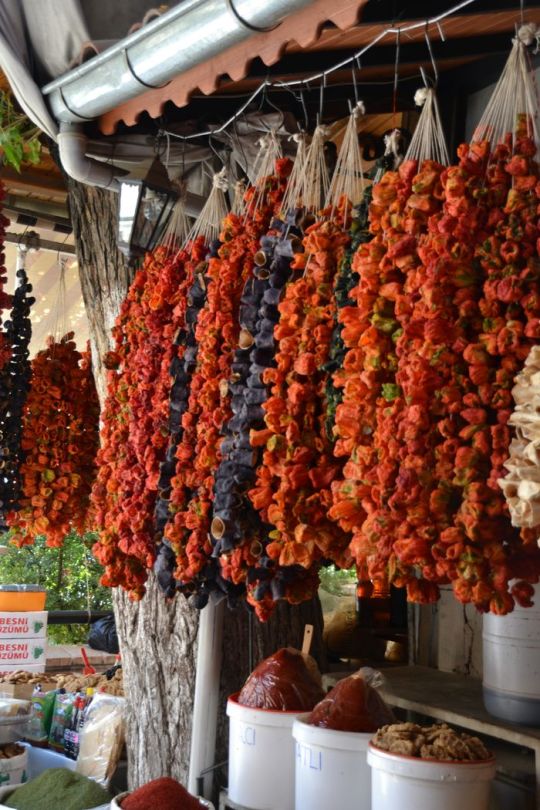
This Roman city
This Roman city, mainly on the island, but with annexes, north and south, on the mainland, according to the legend of St. Genevieve, repels the assault of Attila, is captured by Clovis at the end of the fifth century, and is made his capital. During the early monarchy, the island was the city, the home of the kings, the seat of the church, of government, and of justice, crowded with narrow streets and churches, and densely populated.
Gradually as the walls of Paris were extended in a series of circuits from the twelfth to the eighteenth century, the island city was eased of its close population, and at last in our own day was cleared altogether by gigantic sweeps of destruction and reconstruction. It once contained some 50,000 inhabitants, at least fifty or sixty streets, and more than twenty churches. To-day it has few private houses left, except at each end. As we said, the Citi consists of Cathedral, Palais de Justice, and Sainte Chapelle, Conciergerie and Prisons, Prefecture of Police, Chamber of Commerce, a huge hospital, a huge barrack, a flower market — vast places,’ gardens, quays, and Morgue. This is almost all that stands on the Paris of Julian, Clovis, and Hugh Capet.
Roman and Gallo-Roman circuit
It is a task full of historical teaching to trace the successive circuits and the walls of the city as it gradually grew. Each circuit represents an epoch in the history of France. First comes the old Roman and Gallo-Roman circuit — the Citi or island with some fortified post at the head of the North Bridge (PI. du Chatelet) and at the South Bridge (R. St. Jacques) extending on the South mainland as far as the Thermes with villas, theatres, cemeteries, and establishments outside the city circuit. The second circuit is that of Louis the Stout, the great restorer of the monarchy (1130), who built the Grand Chdtelet on the site of the Place du Chatelet, and the Petit Chatelet on the Quai St. Michel (left bank).
The third circuit is that of the great king Philip Augustus (1200), who built the Louvre, completed Notre Dame, and carried the walls North as far as St. Eustache, South as far as the Pantheon private tour istanbul, and included the smaller island, so that the original Citi was now but a sixth of the city. Next comes the fourth circuit, raised by Etienne Marcel in the middle of the fourteenth century, just after Poitiers during the great English War, who is duly commemorated by the fine equestrian statue beside the Hotel du Ville. Marcel laid the foundations of the Bastille, and repaired and strengthened rather than extended the circuit of Philip Augustus; and then the whole work was completed by Charles v. in the second half of the fourteenth century.
The fifth great circuit is that of Richelieu under Louis XIII. who carried the city walls Northwards as far as the existing inner Boulevards, and the R. Richelieu and its quarter is one of its additions; and Southwards it inclosed the whole district of the Luxembourg and its gardens to the Jardin des Plantes. The sixth great change came in the reign of Louis xiv. who conceiving himself invincible in France, if not in Europe, found fortifications in Paris needless and barbarous. Accordingly in his reign the old walls of Henry iv. and Richelieu were razed, and the Boulevards that we know were constructed as spacious avenues. On the site of the ancient Tour de Nesle, the Institute and the College Mazarin were built; the Louvre was completed and transformed into an Italian palace; the Tuileries were continued until they joined the Louvre; the Invalides and other great works were continued, and finally Paris received its character of an open modern city of Palladian architecture.
0 notes